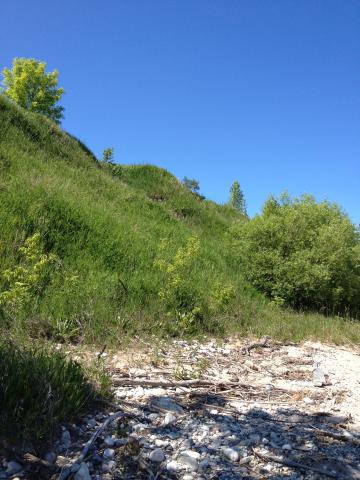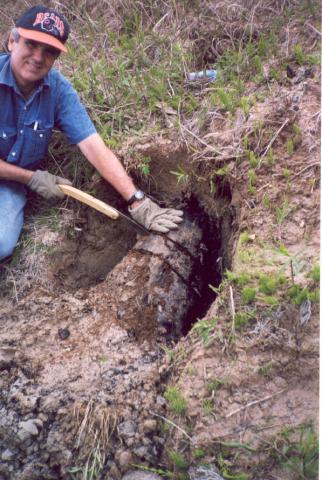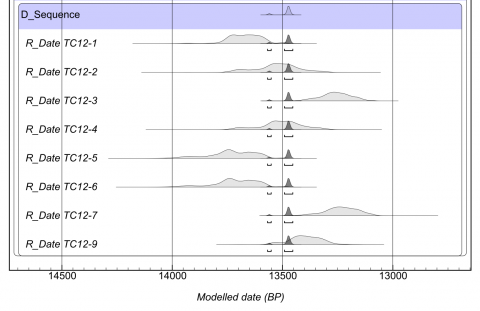• Original location of Two Creekan Forest bed
• Spruce mortality across the Older Dryas woodlands resulted from the Green Bay Lobe re-advance
This is the original exposure of the Two Creeks spruce forest type locality along the western shoreline of Lake Michigan near the town of Two Creeks, Wisconsin, that falls in the Bølling-Allerød period. The site is believed to mark the final advance of the ice sheet into the continental United States ca. 11,800 14C years BP. In fact, log and stump preservation at the type locality and other contemporary sites nearby was facilitated by the glacier advance overrunning the site and burying the trees in glacial till. A tree-ring study by Kaiser (1994) determined that this stand existed for at least 252 years. In addition to the cold-air temperature effects from the advancing glacier, which Kaiser (1994) felt responsible for the very small 20-30 outer rings of many samples, rising lake level as the glacial lobe blocked a northern drainage outlet could have killed any survivors prior to finally being overrun by the glacial front. Wilson (1932, 1936) found floral evidence (pollen, cones) for both black spruce and white spruce at the site, but Kaiser (1994) believed his chronology contained wood from only black spruce. Our tree-ring collection from the site between 2004 and 2011 resulted into a 295-year tree-ring width chronology, which most likely comprises both spruce species. Radiocarbon wiggle-matching of tree rings from the site suggests the trees grew at ca. 13,760–13,530 cal years BP (Leavitt et al. 2007). There are two annually resolved isotopic tree-ring records (d13C and d18O) developed from wood collected from this site.





